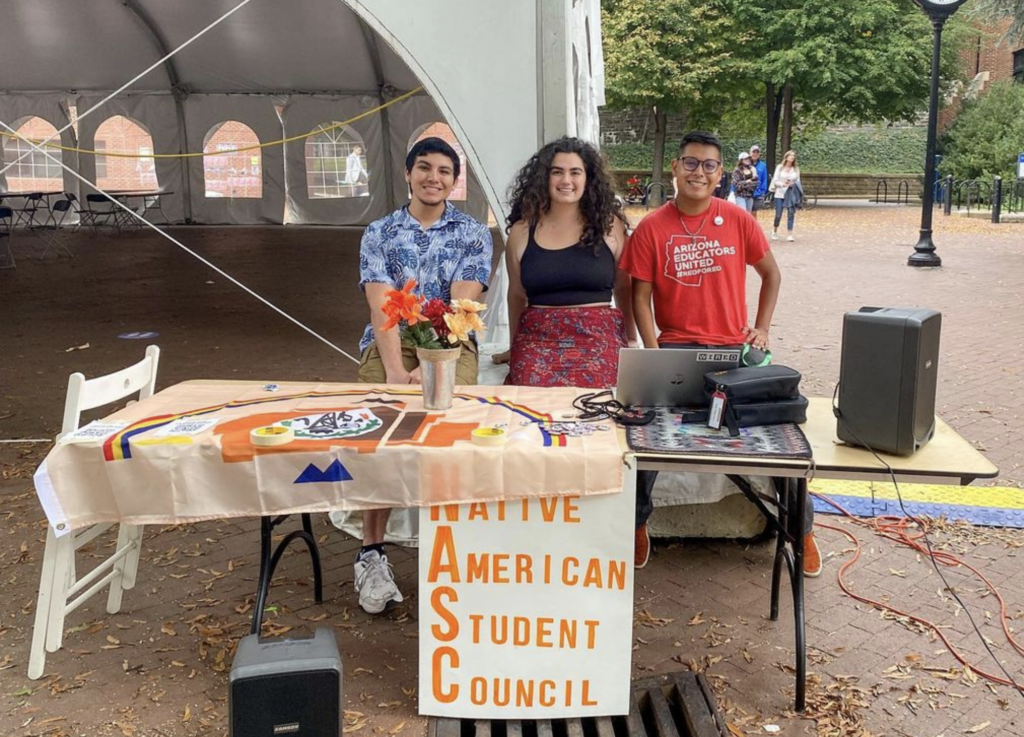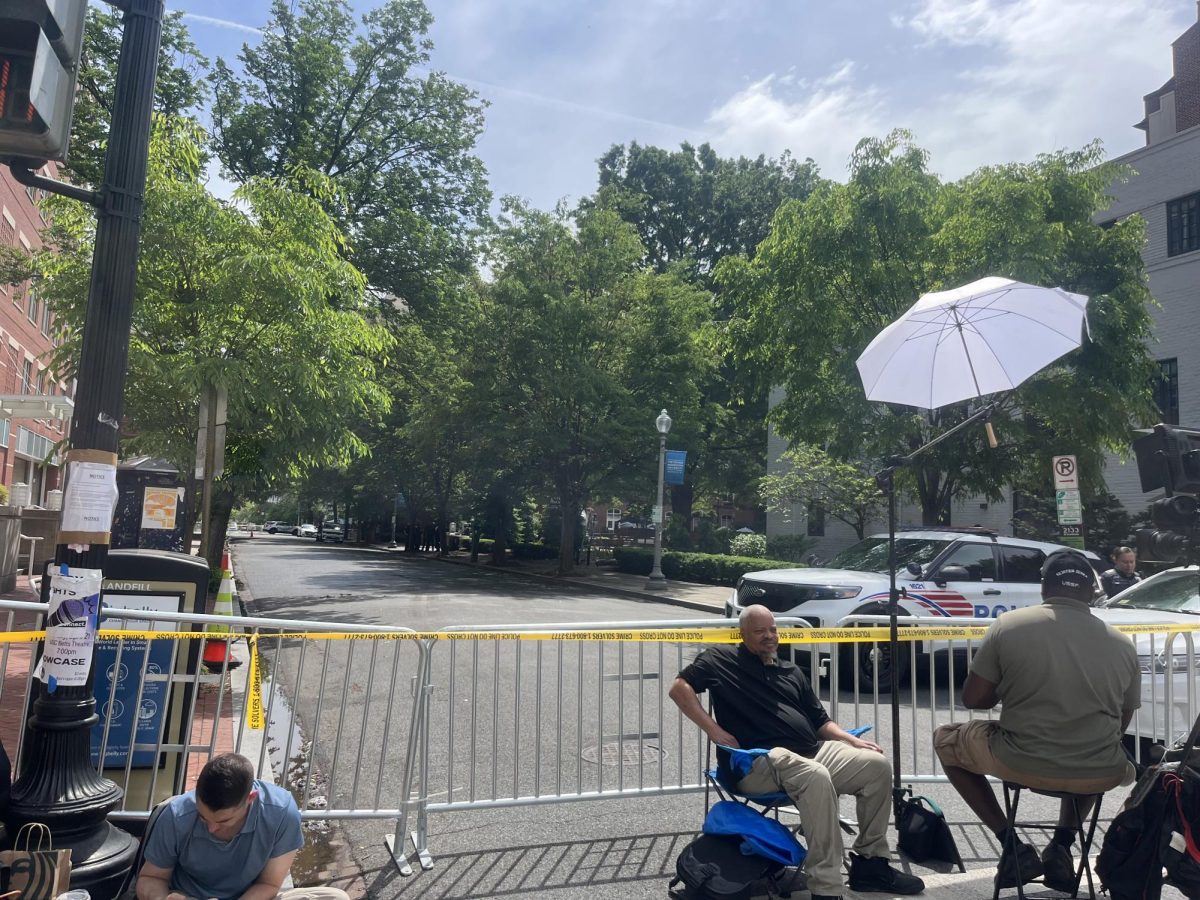Facing limited resources and underrepresentation on campus, Indigenous members of the campus community continue to advocate for increased support and awareness of Indigenous issues.
Shelbi Nahwilet Meissner, an assistant professor of philosophy at Georgetown University, and the GU Native American Student Council (NASC) have spearheaded these efforts after NASC circulated a petition in 2019 calling on the university to provide more support for Native American and Indigedous students. In the past, Indigenous students have called for a formal acknowledgement that the university resides on Piscataway and Nacotchtank land, an Indigenous curriculum workshop, and a partnership with College Horizons, a nonprofit that offers college admissions assistance to Native American students.
Georgetown lacks resources for Indigenous students that many other universities offer, according to Meissner, who is one of two Native American professors on campus and an NASC advisor.

“Your average state university tends to have an Indigenous Studies program,” Meissner said in an interview with The Hoya. “Usually some dedicated resources around recruitment and retention of Native American students, dedicated counselors, as well as tribal liaisons — folks who build relationships and maintain relationships between the university and local indigenous communities. Georgetown doesn’t really have any of those resources.”
Many universities offer support for their Native American and Indigenous students, including the University of Minnesota, which announced plans to bolster Indigenous student enrollment by offering substantial financial aid to those from recognized tribes. Additionally, Dartmouth College is in the process of creating a grant-funded interdisciplinary collaboration to connect students and professors with cultural heritage materials.
The absence of offices and programs dedicated to Indigenous students, coupled with the small Indigenous population on campus, has strained NASC’s ability to carry out advocacy efforts, according to NASC Vice President Alanna Cronk (COL ’23).
“NASC is five people, and that is very important to explaining what we’re working on. Georgetown admits an abysmal amount of Native students,” Cronk said in an interview with The Hoya. “Georgetown doesn’t really have any offices for the university to deal with Indigenous issues, so everything having to do with Indigeneity either gets put on Dr. Shelbi Meissner’s desk or comes into our email. So we are incredibly overburdened with last minute requests or anybody, anywhere, wanting anything from us, so it’s actually incredibly difficult for us to have our own initiatives.”
Additionally, Cronk said although there is an acknowledgment on Georgetown’s Center for Social Justice website that the university resides on Indigenous land, the statement does not go far enough.
“What currently exists is something that one of our members wrote by themselves in a hurry as a very young student, basically from the perspective of the university, and then we put it on the CSJ webpage,” Cronk said.
The university is open to engaging with the Piscataway, according to a university spokesperson.
“The university is extremely supportive of exploring opportunities to share our diversity, equity and inclusion values, and reflect the broad interests of our students,” the spokesperson wrote in an email to The Hoya.
To address the shortcomings of the land acknowledgment, Meissner has proposed a year-long seminar for students that would center land acknowledgement and advocate that it is an ongoing process rather than a stagnant statement.
“Various entities around Georgetown, academic departments, student clubs, classes, etcetera, can come together to dialogue about what a meaningful land acknowledgment would look like from the Georgetown community,” Meissner wrote in an email to The Hoya. “This process involves building and maintaining lasting relationships with local Indigenous communities, and is infused with Indigenous research methodologies, transformative and restorative justice practices, and community-based participatory research.”
To help relieve the burden placed on NASC, Meissner said there should be dedicated places on campus where Indigedous students can carry out their spiritual and ceremonial traditions.
“Things like having places for Indigenous students to practice their spiritual traditions or their ceremonious traditions,” Meissner said. “We want to be able to advocate for them to have spaces to do that. We would love to be able to advocate for a medicine garden or a place where Indigenous students could come together to either grow or teach about growing traditional medicines, ceremonial medicines.”
Meissner, who teaches a course on Intro to Indigenous Philosophy, said she is working on organizing an Indigenous curriculum workshop that would connect professors around campus whose work in art, philosophy, English and other fields is tied to Indigenous issues.
“We’re trying to connect this network of folks who oftentimes have a lot of questions about teaching Native American content,” Meissner said. “So that we can all kind of be on the same page, brainstorm together, link our classes, help students have shared experiences between the courses, those sorts of things.”
While developing initiatives launched by the Indigenous community have the potential to alleviate shortcomings, large gaps still remain in Georgetown’s institutional support for its Indigenous students, according to Cronk.
“There’s so much,” Cronk said. “How are we all together supposed to make the university admit more students and commit to a process of acknowledging that the land they sit on was violently stolen for their benefit? Those are huge things to worry about, and I’m just a junior, struggling with my classes like everyone else.”



















